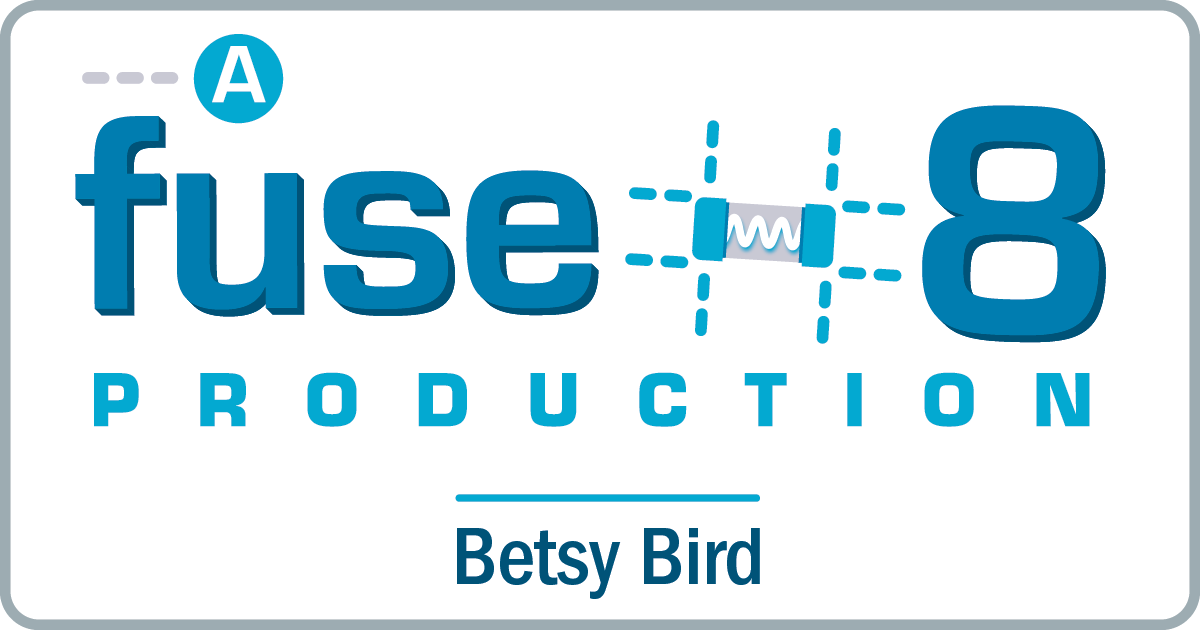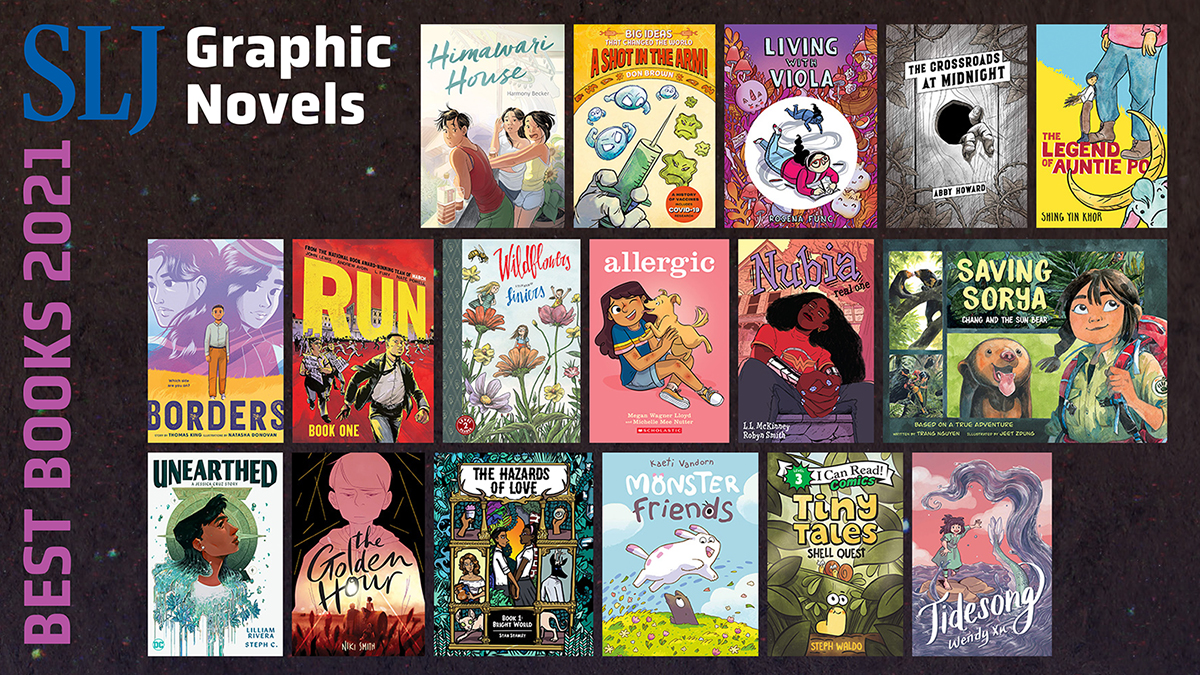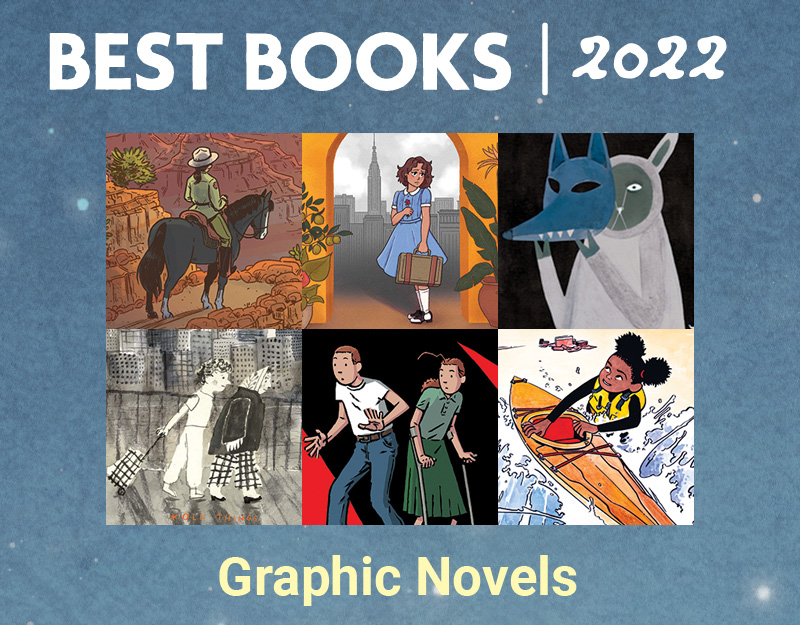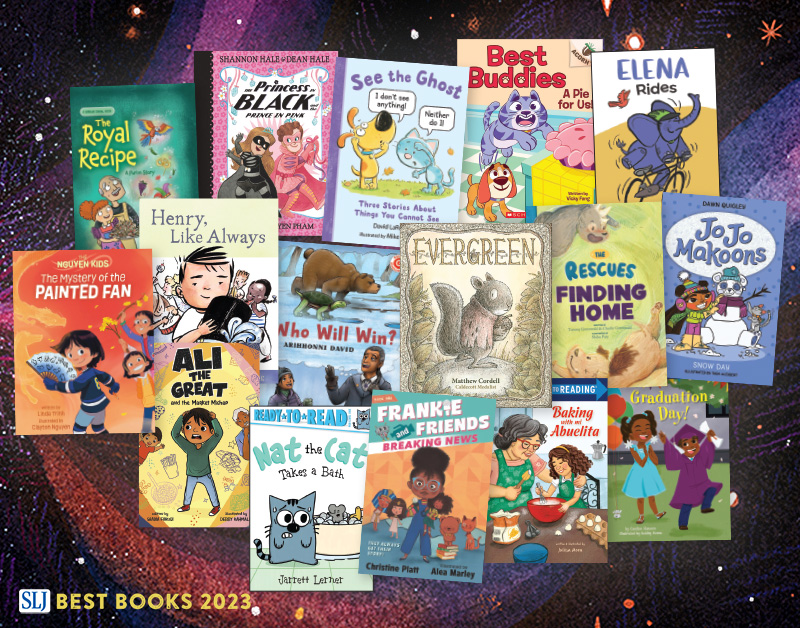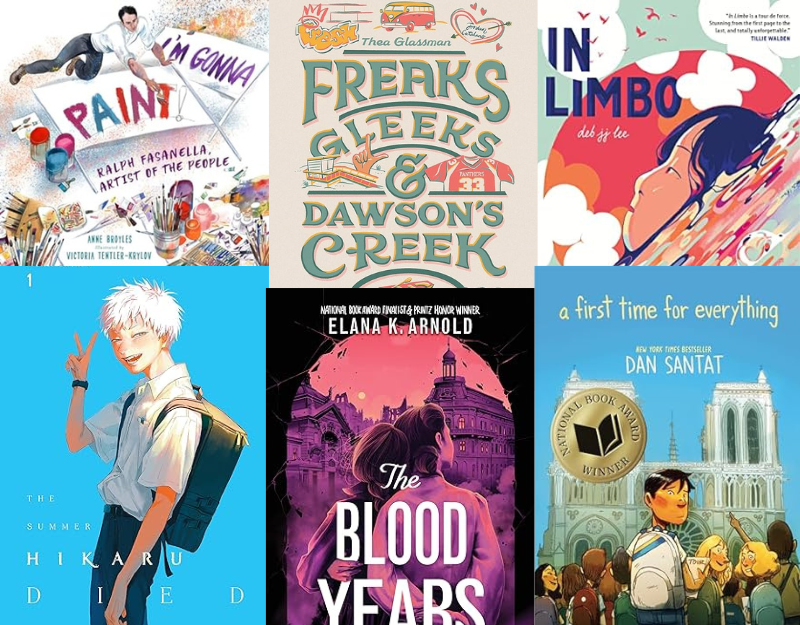Fracturing Fairytales Left and Right: A Talk with Laurel Snyder and Dan Santat About Endlessly Ever After
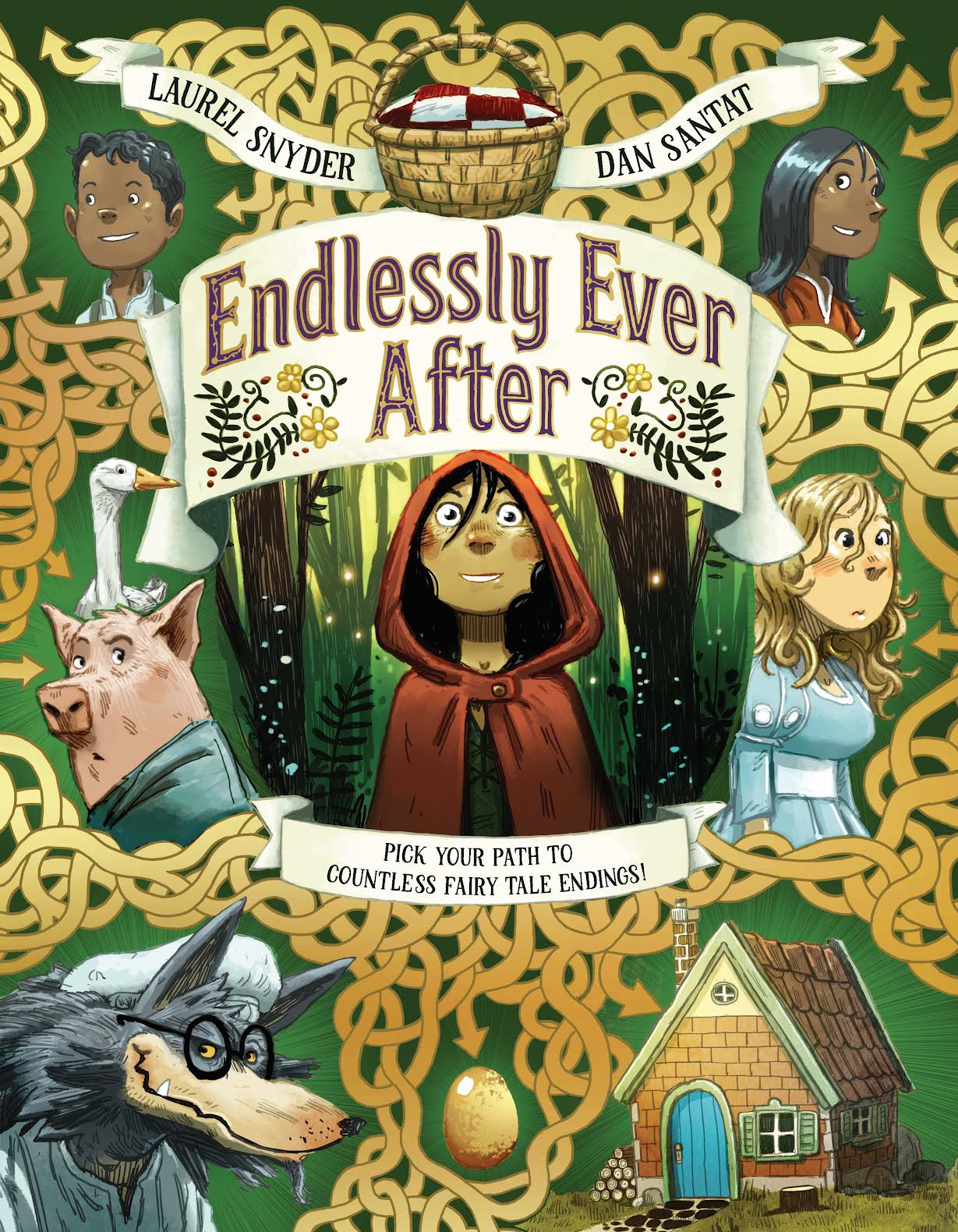
Librarian Question for all of you out there: What is the origin of the term “Fractured Fairy Tales”? Was it invented by Rocky & Bullwinkle or was it already a common phrase in the general lexicon? If you’re unfamiliar with the term, a fractured fairy tale is what happens when a classic tale is revised so as to deliberately poke fun at the form. This may happen in a television program, on the stage, in a performance, or in a book.
Bonus Librarian Question: What was the first children’s book to “fracture” a fairy tale?
These are the deep, penetrating questions that occur to me from time to time when I allow my brain to wander. And for many of us, the question is not merely esoteric. The other day I had a conversation with some librarians in another system who were desperately trying to figure out precisely where one should catalog fractured fairy tales. Do you put them in with the normal fairy tales in the 398s? Do you put them in with the picture books? There are no easy answers.
ADVERTISEMENT
ADVERTISEMENT
You know what is easy? Adoring some of the new ways that authors these days are finding to fracture their own fairy tales. The picture book Endlessly Ever After by Laurel Snyder (out everywhere today!!) is a perfect example since it not only combines the Choose Your Own Adventure format (called “Pick Your Own Path” here) and applies it to fairytales, but it is also sumptuously illustrated by Caldecott Award winner and general nice fellow Dan Santat. And since it took me roughly 45 minutes to read this picture book (I’m not kidding) I thought I deserved some answers about it. Answers that Laurel and Dan were kind enough to provide:
Betsy Bird: Laurel! Dan! How lovely to get a chance to interview you today! All right, so let’s talk turkey. First and foremost, I’m starting with you, Laurel. Were you or were you not a fan of the Choose Your Own Adventure series as a kid? And, if not, what was your preferred book-choice series?
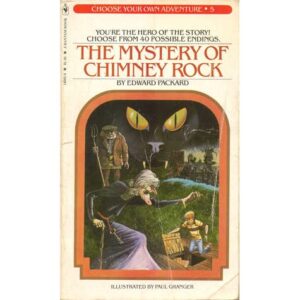
Laurel Snyder: Yes! I absolutely was. I have a big memory of discovering them when a teacher read us The Mystery of Chimney Rock as a read aloud in elementary school. It was incredibly fun to shout and argue with the other kids in the class about which path to take on each page. And then of course to crow if I turned out to be right. After that, I was hooked. I think I read every single one in the library. They were always checked out!
BB: How about you, Dan? Were you a Choose Your Own Adventures fan as a kid, or was it not as much your thing?
Dan Santat: I absolutely loved Choose Your Own Adventure books! They always felt like multiple books in one and the mechanics of how the books worked were just mind blowing to me. You get to be the hero and you get to make all the decisions and as a kid that feels very empowering and it also felt like a game. I remember there were Indiana Jones versions of the Choose Your Own Adventure books that I was obsessed with because it was a character I absolutely idolized as a child and I felt like I got to be him. Now, here I am 35 years later making my own “Pick Your Own Path Book” (apparently the writer who created Choose Your Own Adventure has it trademarked) and I hope that kids rediscover this literary treasure from the 80s
BB: Excellent. So Laurel, tell me a little bit about how ENDLESSLY EVER AFTER came to be. What is its origin story?
LS: Well, I’ve been sort of working towards this for a long time. Many years ago, before I was publishing books for kids, I wrote a small chapbook of poems (for adults) where I used this format to explore how two characters (based on my mom and dad) felt about their courtship. It was called Daphne & Jim, and it came out from a very small press.
Then, eight years ago, I began to work on another picture book, called Hungry Jim. In it, the main character wakes up one morning and finds he’s been turned into a lion. So of course he goes downstairs for breakfast, inclined to devour his mother, but feels conflicted. Initially, I set out to make Jim a pick-your-path story, all about how we make certain choices in life, but struggle with other urges. When I showed a draft to my editor, Melissa Manlove, she loved Jim’s story, and loved the idea of a pick-your-path book, but felt that the structure didn’t quite fit Hungry Jim. She suggested I try something else.
It seemed to me that fairy tales were a perfect fit for a book like this, since kids are familiar with the stories and come with preconceived notions about what “should” and “should not” happen. It was really interesting to play with the layout, push readers into different choices, based on what I thought they’d naturally opt for.

Then I got extremely lucky! Dan Santat happened to be in town for an event at my local children’s bookstore, Little Shop of Stories, and we went to dinner, where he asked what I was working on. I told him, and he suggested I have Melissa send the manuscript his way. How amazing is that? I feel like it’s rarely so easy to find a perfect illustrator for a book, and this one felt like magic.
(I should probably mention that Hungry Jim came out a few years ago, with really stellar art by Chuck Groenink)
BB: Well, Dan, I feel like Laurel’s already answered this question to some extent, but I’d love to hear your take on it. How’d you come to this project? I suspect you may have known Laurel prior to this.
DS: Laurel and I had known each other for a few years prior to being paired up for this project. I was on tour for After the Fall in 2017 and I met Laurel and her kids for dinner when I made a city stop in Decatur, GA. Laurel told me about this choose your own adventure book she had been working on with Melissa Manlove for a few years and they were still looking for an illustrator. Being a huge fan of Laurel’s work (I absolutely loved Orphan Island) I immediately jumped at the chance and told Laurel to let her editor know as soon as possible that I was interested in working on the project if they thought I’d be the right fit. I had worked with Melissa before and I have to admit that I also dropped her an email that same night expressing my interest on illustrating the book. The next morning I got an email response from her and we got the ball rolling a few months later.
BB: That just gets me into the process you two had to go through. Laurel, how do you write a book like this? I mean, logistically? Did you have a lot of whiteboards, or a pegboard with a lot of red string connecting the pushpins? Did you use index cards? The sheer level of complexity at work in writing a book like this is astounding.
LS: Yeah, it was really something! An incredibly messy process. I did the whole thing longhand, initially. Just with loose sheets of paper that I could lay out on the ground and rearrange, see all at once. I basically wrote an outline, mapping out what I wanted each thread to do, and then transferred the outline entries to the sheets of paper. So like, page one might just say, “Rosie wakes up. Red coat (2) or fur coat (3)?” And then I’d scribble on the #3 sheet, “Rosie in fur coat, meets wolf. Does she go to the jamboree? Yes (4) or no (5)?” . And so on and so on…
After I had the initial paths worked out, I made a dummy out of the pages and then wrote a poem a day, pretty much, until I had a working first draft. But then a lot happened in revision. There were threads I added and some I shortened. Changes had to be made for visual continuity (for instance, Rosie had to get warm and take her coats off so that the later sections of the longer paths could intertwine in the art). Start to finish, this book took eight years!
BB: Eight years?! Foof! How about you, Dan? From the cover a person would never suspect the sheer amount of art inside this book. It’s 92 pages! And you with a graphic novel out this year as well (to say nothing of the picture books too…). Dare I ask but how long did it take you to finish this?

DS: Pandemic time is a completely different than normal time. When the pandemic started I had four books on my plate (The Aquanaut, Endlessly Ever After, The Blur, and The Baby Changing Station) and they were each all about a third to maybe half of the way done. I typically finish illustrations for books in about 6-8 months, but it was actually the publishing side of things that slowed these projects down at each different publisher. I would turn in the art and not hear anything from folks for weeks to sometimes over a month and I was sometimes just left with nothing to do. I would try to write but as you probably heard from many other writers on social media, it was almost impossible to write in all our anxiety ridden mental states. Each of those books, my “Pandemic Babies” as I like to call them, each took twice as long to make with schedules that stretched into a year to a year and a half. On one hand, it was nice to not be rushed but it was also kind of depressing
BB: Speaking of depressing, if Adam Gidwitz has taught us nothing else, it’s that death and dismemberment go hand-in-hand with fairy tales. As such, the notoriously death-happy Choose Your Own Adventure format that this replicates is an ideal match. In both cases, people die willy-nilly. Laurel, did you get any pushback from anyone when it came to the variety of ways in which “you” die in this story?
LS: Nobody at Chronicle said a word! In fact, they’ve always been supportive of my darker impulses, now that I think about it. (I mentioned Hungry Jim above, and Swan, my biography of Anna Pavlova, includes a death scene too). I’m definitely anticipating that there will be squeamish grownups out there, as always. But we worked hard to strike a playful tone with Endlessly Ever After. So far, all reports from actual kids are that the deathly endings do just what they’re supposed to– entice readers to turn back to the beginning so that they can try again.
I think there are a ton of interesting ways to handle death in books for kids. When I approach the subject in my middle grade work, where the characters are fully realized people who live and breathe and feel on the page, death requires a vastly different kind of care. But Rosie is a blank slate as a character. That’s part of the magic of this sort of book, and of second person POV. The reader brings their own sense of who Rosie is to the page, so on some level, “death” means in the story whatever it means to the reader. Also, I made very particular choices about the vocabulary and prosody of the text, pushed the story as far as I could from realistic language. And one nice thing about fairy tales is that they operate outside the real world!
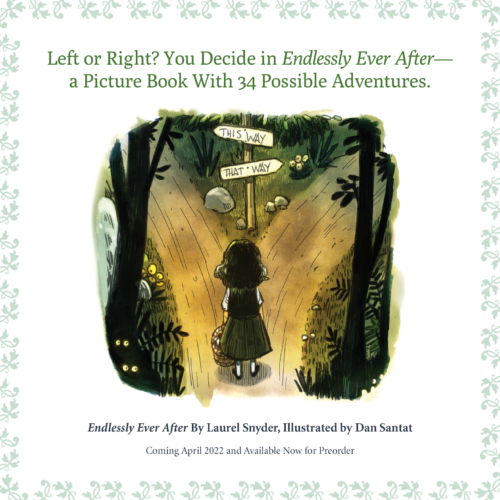
You know what? Now that I think about it, the only tweak we made regarding the darker elements in the book was because Dan (very wisely) requested we remove a line about a “shot ringing out,” in one spread. He didn’t want to draw a blunderbuss, and he was exactly right. I think this is one of the important things to remember, when you reimagine older material, that you have to constantly ask yourself what you want to revise out of the old tales, because the details mean different things today. A man with a gun doesn’t mean what he did to a 19th century child, when the Grimm brothers were collecting their stories. Though a witch in a candy-house means pretty much the same thing! (this story is also maybe a good example of why it’s good to truly collaborate with an artist. I learn so much from the illustrators I’m fortunate enough to work with).
BB: Particularly when such artists are Dan Santat. That reminds me, Dan, I just gotta know what the deal is with the sheer amount of gold on the cover of this book. Was that your idea or did an Art Director decide to go full Midas and dip the thing into some vat in Fort Knox? I swear, I’ve never seen a cover quite as tastefully shiny as this one.
DS: It was actually the design team at Chronicle that proposed the idea of gold! When I worked with Amelia Mack years ago on Carnivores I had proposed an idea that the cover looked like a styrofoam meat package that you’d find in a grocery store. Amelia was the one who took the details a step further by adding a spot gloss to the jacket to emulate the shrink wrap and then selecting the specific textured printer paper that make up the price sticker. It’s those little details that seriously make Chronicle one of the best in the business in terms of design. In this case, the art director, Amelia Mack, and the designer, Abbie Goveia, saw my initial cover sketches and proposed the idea of gold on the intertwining arrow lanes and I got a little giddy. I would never be so bold as to ask for something like that and here it was being served to me on a platter! I’d also like to add that we even had discussions on the color of the jacket. I thought white would make the gold pop more whereas Amelia and Abbie kept pushing for a darker color. After weeks of discussion I finally caved in and they were 100% right. They made the work better and I give them full credit where I couldn’t see the flaws. Check it off my bucket list! The design team at Chronicle is the best I’ve ever worked with and this is hands down one of my most favorite covers that I’ve ever done.
BB: And one of the most beautiful. I love this talk about how your vision for the jacket changed. Speaking of changes, Laurel, were there any fairy tales that you originally thought you’d include but that just didn’t pan out?
LS: Once I had the working draft, we didn’t cut any full threads (it’s a nightmare to imagine what that process would have been like– have you ever untangled an old jewelry box of beaded necklaces?). But we definitely added some. For instance, Jack and his goose entered the story late in the game. In fact, the initial document was only half as long! That said, there were stories I wanted to work in and never did. The main thing was that I didn’t want to include any stories with which kids didn’t have some familiarity, even though several of my own favorites are less well-known. The obvious missing tale is Snow White and Rose Red, because Rosie and Rose could have gotten mixed up, and that would have been fun. But I wasn’t sure that kids would get the reference.
(Though now, thanks to your question, I wonder if there might not be something in that idea, as a different book– Rose Red and Rosie, in their own book. Hmmm…)
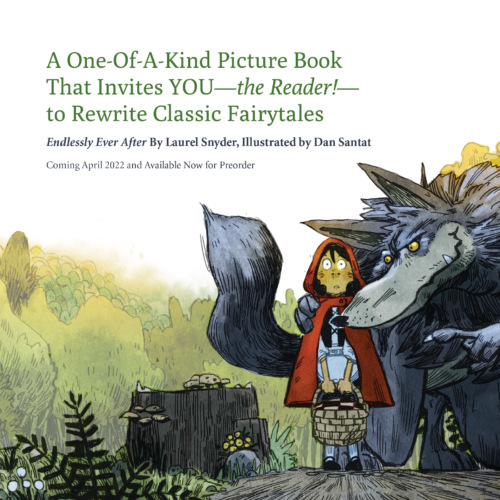
ADVERTISEMENT
ADVERTISEMENT
BB: Always a pleasure to watch a creative idea start to spring up. Hard hitting question time now. Dan, this one’s for you. Favorite character to draw in the book: Go (I suspect it was the wolf).
DS: Yup. It was the wolf. That obvious, huh?
BB: Sometimes the pleasure a person takes in their creations shines through, that’s all. Oh, and Laurel, I have to give you full credit for that title. I foolishly took this book with me to lunch, thinking I could whip through it in 15 minutes or so. Instead, a full half an hour goes by where I do what I did as a kid: Find the ending I wanted and then try to figure out how to get to it. That doggone Sleeping Beauty is a tricky one to locate. Going into this project, did you know it would prove to be such a delicious time suck?
LS: Thank you for saying that! I’ve been so happy to hear this from people, that kids are having that same experience, of spending significant time with the book, reading it over and over in one sitting. Initially, I didn’t know it would operate like that. In my head it was a “picture book” and I made assumptions (don’t we often?) about what a picture book can do and how long it should be. But that’s the thing about picture books– they never fail to surprise us! We can stretch and adjust the form as much as we need to, publishers willing. In this way, the form evolves.
Even though I started out thinking of it as a “picture book” at some point, I realized it was also a hybrid story collection. Told in verse. As well as a fractured fairy tale. This often happens to me, that I start with an idea for a story, but then it demands a different form. Poems become essays and picture books become novels. But this was the first time the story decided to invent a new form for itself. Bless Chronicle for allowing me the flexibility and room to play!
Oh, and I should make a point of saying that it wasn’t me who came up with the title! This had never happened to me before, but I was terribly stuck on the title, through all those years of revision, and then at the last minute, Feather Flores, another editor at Chronicle, suggested Endlessly Ever After and I shouted for joy. Olugbemisola Rhuday-Perkovich suggested the subtitle when we were struggling with that too. As much as I’d like to be able to do everything myself, the truth is that I can’t. Bookmaking is a collaborative art, and I’m so grateful to have a brilliant creative team at Chronicle, and a fantastic community of friends, to help me.
BB: Aww. That’s such a nice way to sign off. Thank you, Laurel and Dan, for taking so much time to answer my questions today!
Endlessly Ever After is on bookstore and library shelves everywhere today. Special thanks again to Laurel and Dan and to Eva Zimmerman and the folks at Chronicle for helping us bring this together.
Filed under: Best Books, Best Books of 2022, Interviews
About Betsy Bird
Betsy Bird is currently the Collection Development Manager of the Evanston Public Library system and a former Materials Specialist for New York Public Library. She has served on Newbery, written for Horn Book, and has done other lovely little things that she'd love to tell you about but that she's sure you'd find more interesting to hear of in person. Her opinions are her own and do not reflect those of EPL, SLJ, or any of the other acronyms you might be able to name. Follow her on Twitter: @fuseeight.
ADVERTISEMENT
ADVERTISEMENT
SLJ Blog Network
The Moral Dilemma of THE MONSTER AT THE END OF THIS BOOK
Winnie-The-Pooh | Review
Parsing Religion in Public Schools
ADVERTISEMENT

